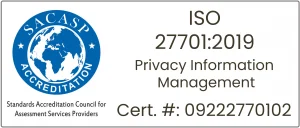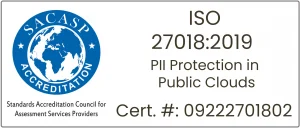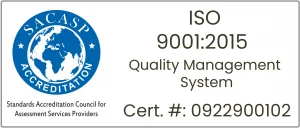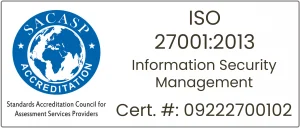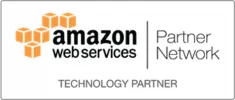© 2025 Macro Global. All Rights Reserved.
The burgeoning growth of remittances plays a crucial role in the global economy, improving livelihoods in recipient countries and impacting businesses. According to the World Bank’s report, in 2023, global remittance flows surpassed $650 billion, with developing nations benefiting the most. As the remittance market expands, expectations for faster, more efficient, and cost-effective services continue to rise.
The advent of Third-Party Providers (TPPs) promised innovation and cost-efficient solutions. With more players entering the market, competition has intensified, driving advancements in technology, reducing transaction fees, and improving the speed and accessibility of remittance services.
This blog will explore how TPPs are transforming remittances by offering cost-effective solutions through advanced technology, API integration, and open banking. We will also examine key cost factors, varying remittance corridor costs, and best practices for boosting customer loyalty while reducing operational expenses.
Factors Impacting the Cost of Sending Remittances
Integrations
Integrating remittance systems with banking networks and payment gateways has its rewards and limits. API-driven solutions offer seamless connectivity and efficiency and have high integration costs. Also, developing and maintaining robust APIs requires significant investment in technology and skilled resources. Additionally, ensuring interoperability between different platforms adds to the complexity and cost. The upfront investment can be substantial, but the long-term benefits include improved operational efficiency and reduced transaction times.
Network Fees
Several intermediaries like banks, clearing houses, exchange brokers, and other payment processors may charge separate fees for their services. With each intermediary, it adds to the transaction costs. In contrast, fintech innovations like blockchain technology streamline transactions by eliminating intermediaries, significantly reducing network fees.
Platform Costs
Centralised systems are typically managed by large financial institutions and require significant infrastructure investment and operational expenses. These platforms often have high fees associated with maintenance and upgrades. While cloud-based and decentralised platforms offer cost-effective alternatives by leveraging scalable resources and reducing the need for physical infrastructure. This shift towards cloud solutions is driving down costs and improving flexibility.
Payment Processing Fees
International bank transfers are more expensive due to the involvement of multiple intermediaries and the traditional banking infrastructure. In contrast, digital wallets and payment apps often provide lower fees by bypassing banks and utilising more efficient payment networks. These digital solutions leverage real-time processing and lower operational costs, making them an attractive option for cost-conscious consumers.
Compliance Overheads
Compliance with regulations like AML and KYC is a major cost factor due to manual, labour-intensive processes. TPPs offer automated tools that streamline KYC and AML checks, using advanced algorithms to detect suspicious activities, reducing both time and compliance costs while ensuring regulatory adherence.
Other Influencing Factors
- FX Margins: Traditional providers inflate remittance costs with higher FX margins, Mobile operators tend to have lower FX margins around 3%, while traditional banks impose significantly higher FX rates.
- Transfer Speeds: Fintech providers, using faster digital processes, significantly reduce both transfer time and associated costs. Digital remittances incur an average cost of 4.96% in 2024 Q1, while non-digital transactions cost 6.94%.
- Intermediary Charges: Charges from intermediary banks or payment processors increase costs, especially in corridors with fewer direct partnerships. Sending money to a bank account incurs costs up to 11.74% if it involves correspondent banks, while mobile wallets or direct payments are cheaper at around 4.61%.
Less Expensive and High-Cost Corridors
Low-Cost Corridors
- Intra-regional Transfers: Remittance corridors within the same region, such as the Gulf Cooperation Council (GCC) countries to South Asia is said to be 5.16%, owing to well-established networks and minimal regulatory barriers.
- Countries with Strong Digital Infrastructure: The presence of fintech solutions, efficient banking systems, and the adoption of mobile money services help drive down costs.
- Competition Among Service Providers: Corridors with a higher number of Money Transfer Operators (MTOs) and fintech platforms, such as the USA to Mexico, benefit from lower costs due to increased competition and pricing transparency and has almost 4.87%.
High-Cost Corridors
- Transfers to Sub-Saharan Africa: Remitting funds to countries in Sub-Saharan Africa, such as Nigeria or Angola, is often expensive due to poor banking infrastructure, high compliance costs, and limited competition, and is almost 7.73% total average cost in Q1 2024. The lack of advanced digital payment systems also contributes to higher fees.
- Small, Low-Volume Markets: Corridors involving smaller countries with less remittance volume, like the Pacific Islands, often have higher transaction costs. Low transaction volumes limit economies of scale, leading to higher per-transaction fees for both service providers and customers.
- Countries with Restrictive Regulations: Countries with stringent foreign exchange controls or complex regulatory frameworks, such as Venezuela or Argentina, often see higher remittance costs. some African corridors report costs of up to 13.18%. Regulatory compliance, monitoring, and reporting requirements add additional costs to the service.
Impact of Local Regulations, Banking Infrastructure, and Technology on Pricing Differences
- Local Regulations: Countries with strict regulatory requirements for money transfers see higher remittance costs up to 5 to 15%. Service providers must navigate complex legal frameworks, leading to increased compliance costs, which are often passed on to customers.
- Banking Infrastructure: The strength and efficiency of the local banking system play a significant role in remittance costs. Countries with limited banking infrastructure or reliance on correspondent banks incur higher costs due to increased intermediary fees and longer transaction times which may hike up to 10 to 20%. Conversely, regions with robust digital banking systems see lower fees due to the availability of direct, instant transfer mechanisms.
- Technology Adoption: Countries that embrace fintech innovations, mobile money platforms, and alternative payment systems benefit from lower remittance costs. The advanced digital infrastructure allows for faster, cheaper transactions, reducing reliance on traditional banking channels, and saving 10 to 20% of the commission cost. In contrast, countries that have not widely adopted such technology still face high transaction costs, as traditional banking methods dominate the remittance landscape.
Cost Breakdown
Analysing these components reveals significant cost disparities, driven by the choice of remittance channel, country regulations, and financial infrastructure.
The cost of sending remittances typically includes multiple components:
- Transaction Fees: Fixed or percentage-based fees charged by remittance service providers (RSPs) for transferring money. Mobile operators charge Mobile Operators charge around 1.5% to 2.0% in transaction fees. Banks have much higher fees, around 12.66% on average for traditional services.
- FX Margins: The spread between the market exchange rate and the rate offered by RSPs, which can vary between providers, particularly in high-cost corridors. Mobile Operators have fluctuated around 3% in FX margins.
- Intermediary Fees: Hidden charges from correspondent banks or payment processors involved in routing funds, particularly in corridors with fewer direct partnerships. Sending to a bank account with the same bank or to a partner of the originating bank may incur a fee of 11.74%, while transferring to any other bank incurs around 7.26%.
- Compliance Costs: Compliance costs, covering AML/KYC regulations, typically account for 1% to 3% of remittance costs, with higher percentages in stricter regions like Sub-Saharan Africa, where total costs average 7.73%.
Role of TPPs in Remittances
TPPs play a crucial role in redefining the remittance process, through incorporating cutting-edge technologies. Bringing a plethora of benefits to the remittance landscape, their distinct solutions elevate performance.
Let us explore their diverse solutions:
- API-Based Solutions: TPPs revolutionise remittances with advanced APIs, enabling seamless integration between banks, payment gateways, and digital wallets. This connectivity streamlines transactions, reduces costs, and improves efficiency by automating processes like payment initiation and settlement, while also enhancing transparency and tracking.
- Blockchain Technologies: Blockchain transforms remittances with decentralised peer-to-peer transactions, eliminating intermediaries, reducing fees, and speeding up transfers. Smart contracts automate transaction terms, enhancing security and transparency, and reducing fraud and errors.
- Open Banking & Instant Payments: Open Banking and instant payment systems allow direct communication between banks and TPPs. This helps to lower costs and enable real-time transfers. This integration enhances speed, convenience, and user experience in cross-border transactions.
- Compliance Management: TPPs strengthen compliance with advanced KYC and AML solutions, automating verification and monitoring. This reduces manual checks, cuts operational costs, and ensures adherence to regulations while protecting customer information and mitigating fraud risks.
NetRemit – A comprehensive platform offering superior connectivity
NetRemit is at the forefront of innovation in the remittance industry, offering a range of advanced features that address cost and efficiency challenges. Enriched with enhanced compliance framework, leverages automated KYC and AML checks. It streamlines the compliance process and minimises all other associated costs.
With advanced algorithms that detect suspicious activities, NetRemit ensures stringent adherence to regulatory requirements, thereby bolstering security and operational efficiency. The platform excels in real-time data exchange, which facilitates efficient straight-through processing of transactions. This capability drastically reduces transaction times and enhances accuracy, ensuring a seamless user experience.
Additionally, NetRemit provides flexible FX management, allowing for the configuration of various FX rate models, including flat, fixed, and variable rates. This flexibility empowers providers to offer competitive pricing and optimise revenue generation, enhancing their overall service offerings. The robust reconciliation features ensure precise tracking of transactions, improving financial control and reducing errors.
The ability to integrate seamlessly with TPPs through its advanced partner integration capabilities fuels the platform to the platform to drive innovation and streamline remittance processes. By simplifying API integration and improving connectivity with financial systems, the platform streamlines updates and collaborations, expanding service capabilities and reducing costs. This approach underscores the vital role of TPP integration in boosting service efficiency and effectiveness.
Wrapping Up
The cost of sending international remittances is influenced by multiple factors, including integrations, network fees, platform costs, payment processing fees, and compliance overheads. TPPs are playing a pivotal role in transforming the industry by leveraging advanced technology to reduce costs and enhance efficiency. NetRemit illustrates this transformation with its innovative features, including automated compliance, real-time data exchange, flexible FX management, and robust reconciliation.
By adopting TPP solutions and leveraging platforms like NetRemit, remittance providers can offer more cost-effective, secure, and efficient services, benefiting both senders and recipients.
Related Posts
10 November 2025 NetRemitNextGen Banking
In Sync with the Industry’s Direction: Macro Global’s Perspective on Money20/20 USA 2025
Know how Macro Global reflects the spirit of Money20/20 USA 2025 by embracing intelligent fintech, agile infrastructure, and cross-border remittance innovation.
29 October 2025 NetRemitNextGen Banking
Money Transmitter Licensing Across the U.S.: A State-by-State Overview
Explore how each U.S. state money transmitter license works as we decode everything from rules, processes to compliance essentials for remittance businesses.
29 August 2025 NetRemitNextGen Banking
FCA PS25/12: Future of Safeguarding Regime for Payment & E-Money Firms. Compliance Priorities and Opportunities Explained
FCA PS25/12 compliance guide: Payment Institutions, EMIs & SPIs must tighten reconciliations, audits & reporting to safeguard cross-border payments.

